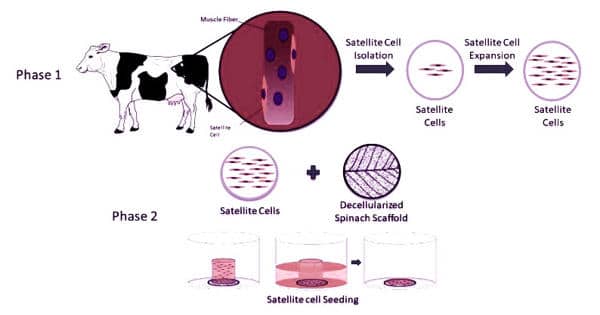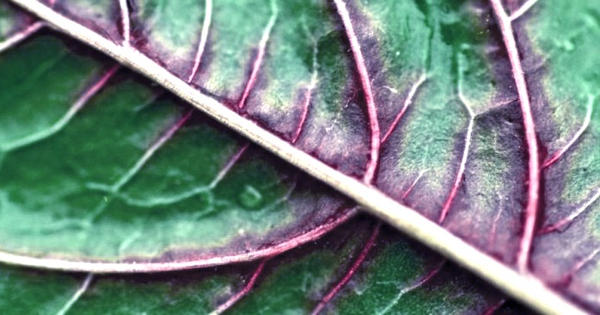According to a new report in the advance online edition of the journal Food BioScience, spinach, a cost-effective and environmentally friendly scaffold, provided an edible platform upon which a team of researchers led by a Boston College engineer grew meat cells, an advance that may accelerate the development of cultured meat.
The circulatory network of a spinach leaf, stripped of all but its veiny skeleton, successfully served as an edible substrate upon which the researchers grew bovine animal protein, according to Boston College Professor of Engineering Glenn Gaudette, the lead author of the new study. The findings could aid in increasing the production of cellular agriculture products to meet rising demand while also lowering environmental costs.
Cost-efficient and environmentally friendly, a spinach leaf proves to be an edible platform upon which to grow cultured meat cells.
A spinach leaf’s veiny skeleton has been shown for the first time to support the growth of artificial meat, according to a Boston College researcher. “Cellular agriculture has the potential to produce meat that has the structure of traditionally grown meat while using less land and water,” said Gaudette, the inaugural chair of BC’s new Engineering Department. “We show that decellularizing spinach leaves can be used to grow bovine muscle cells as they develop into the meat.”
Gaudette’s previous advances in this area drew international attention. Gaudette and a multi-university team demonstrated in 2017 that human heart tissue could be grown on a spinach leaf scaffold, which was chosen because it provided a natural circulatory system that is nearly impossible to replicate using available scientific tools and techniques.

It is predicted that by 2050, there will be insufficient agricultural land to feed the world. Cellular agriculture has the potential to produce meat with the same structure as traditionally produced meat while using less land. There is a need for an edible scaffold that can be used to grow animal muscle.
“Previously, we demonstrated that spinach leaves could be used to create heart muscle patches,” Gaudette explained. “Instead of using spinach to regrow replacement human parts, this latest project shows that spinach can be used to grow meat.” The team, which included Worcester Polytechnic Institute graduate students Jordan Jones and Alex Rebello, removed the plant cells from the spinach leaf and used the remaining vascular framework to grow isolated cow precursor meat cells, according to Gaudette. The cells survived for up to 14 days before differentiating into muscle mass.
“In order to feed the growing population, we need environmentally and ethically friendly ways to grow meat,” said Gaudette, whose research is funded by New Harvest. “We set out to see if we could accomplish this using an edible scaffold. Muscle cells are anchorage dependent, which means they must cling to something in order to grow. Plastic tissue culture plates can be used in the lab, but they are not edible.”
According to the researchers, the successful results will lead to further characterization of the materials and scientific processes in order to better understand how to meet consumer demand and gauge how large-scale production could be accomplished while adhering to health and safety guidelines. “We need to scale this up by growing more cells on the leaves to make a thicker steak,” Guadette explained. “We’re also looking at other vegetables, as well as animal and fish cells.”
















